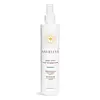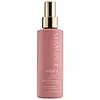What's inside
What's inside
 Key Ingredients
Key Ingredients

 Benefits
Benefits

 Concerns
Concerns

 Ingredients Side-by-side
Ingredients Side-by-side

Water
Skin ConditioningAloe Barbadensis Leaf
MaskingCetearyl Alcohol
EmollientGlycerin
HumectantDistearoylethyl Dimonium Chloride
Caprylic/Capric Triglyceride
MaskingHydrolyzed Quinoa
Skin ConditioningGluconolactone
Skin ConditioningSodium Benzoate
MaskingCalcium Gluconate
HumectantPotassium Sorbate
PreservativeBenzyl Acetate
MaskingLinalyl Acetate
MaskingCitronellol
PerfumingAbies Balsamea Needle Oil
MaskingJuniperus Virginiana Oil
MaskingAlpha-Terpinene
PerfumingAmyl Cinnamal
PerfumingLinalool
PerfumingPogostemon Cablin Leaf Oil
MaskingSalvia Sclarea Oil
MaskingCitrus Reticulata Peel Oil
MaskingMentha Citrata Herb Oil
PerfumingEugenia Caryophyllus Oil
Michelia Alba Leaf Oil
MaskingLavandula Angustifolia Oil
MaskingCitrus Limon Peel Oil
MaskingCitrus Aurantifolia Oil
CleansingLavandula Hybrida Oil
EmollientCinnamomum Camphora Bark Oil
MaskingAlpha-Ionone
PerfumingEvernia Prunastri Extract
PerfumingAnisaldehyde
MaskingCistus Ladaniferus Resin
MaskingMenthol
MaskingMyristica Fragrans Kernel Oil
MaskingJasminum Grandiflorum Flower Extract
MaskingNerol
PerfumingBenzaldehyde
MaskingChamomilla Recutita Flower Extract
MaskingEucalyptus Globulus Leaf Extract
PerfumingGinkgo Biloba Leaf Extract
Skin ConditioningAspalathus Linearis Leaf Extract
Skin ConditioningHoney Extract
HumectantCalophyllum Inophyllum Seed Oil
AntimicrobialRosmarinus Officinalis Leaf Oil
MaskingCitric Acid
BufferingEugenol
PerfumingLimonene
PerfumingWater, Aloe Barbadensis Leaf, Cetearyl Alcohol, Glycerin, Distearoylethyl Dimonium Chloride, Caprylic/Capric Triglyceride, Hydrolyzed Quinoa, Gluconolactone, Sodium Benzoate, Calcium Gluconate, Potassium Sorbate, Benzyl Acetate, Linalyl Acetate, Citronellol, Abies Balsamea Needle Oil, Juniperus Virginiana Oil, Alpha-Terpinene, Amyl Cinnamal, Linalool, Pogostemon Cablin Leaf Oil, Salvia Sclarea Oil, Citrus Reticulata Peel Oil, Mentha Citrata Herb Oil, Eugenia Caryophyllus Oil, Michelia Alba Leaf Oil, Lavandula Angustifolia Oil, Citrus Limon Peel Oil, Citrus Aurantifolia Oil, Lavandula Hybrida Oil, Cinnamomum Camphora Bark Oil, Alpha-Ionone, Evernia Prunastri Extract, Anisaldehyde, Cistus Ladaniferus Resin, Menthol, Myristica Fragrans Kernel Oil, Jasminum Grandiflorum Flower Extract, Nerol, Benzaldehyde, Chamomilla Recutita Flower Extract, Eucalyptus Globulus Leaf Extract, Ginkgo Biloba Leaf Extract, Aspalathus Linearis Leaf Extract, Honey Extract, Calophyllum Inophyllum Seed Oil, Rosmarinus Officinalis Leaf Oil, Citric Acid, Eugenol, Limonene
Water
Skin ConditioningGlycerin
HumectantPentylene Glycol
Skin ConditioningBehenamidopropyl Dimethylamine
EmulsifyingSr-(Wasp Spider Polypeptide-1 Oligopeptide-178)
Skin ConditioningPolyporus Umbellatus Extract
Skin ProtectingSr-Spider Polypeptide-1
Skin ProtectingLaurdimonium Hydroxypropyl Hydrolyzed Barley Protein
HumectantCocos Nucifera Fruit Juice
EmollientCocos Nucifera Oil
MaskingMoringa Oleifera Seed Oil
EmollientOenothera Biennis Oil
EmollientSclerocarya Birrea Seed Oil
HumectantXimenia Americana Seed Oil
EmollientPersea Gratissima Oil
Skin ConditioningOrbignya Speciosa Kernel Oil
EmollientHydrogenated Olive Oil Unsaponifiables
EmollientAstrocaryum Murumuru Seed Butter
EmollientSodium PCA
HumectantSodium Lactate
BufferingArginine
MaskingAspartic Acid
MaskingPCA
HumectantGlycine
BufferingAlanine
MaskingSerine
MaskingValine
MaskingProline
Skin ConditioningThreonine
Isoleucine
Skin ConditioningHistidine
HumectantPhenylalanine
MaskingTocopherol
AntioxidantGlyceryl Undecylenate
EmollientPhospholipids
Skin ConditioningPolyglyceryl-10 Dioleate
EmulsifyingPolyglyceryl-10 Oleate
Skin ConditioningSodium Stearoyl Lactylate
EmulsifyingParfum
MaskingAmyl Cinnamal
PerfumingBenzyl Alcohol
PerfumingCitral
PerfumingCitronellol
PerfumingLimonene
PerfumingFarnesol
PerfumingGeraniol
PerfumingLinalool
PerfumingSodium Hyaluronate
HumectantLactic Acid
BufferingCetearyl Alcohol
EmollientSodium Benzoate
MaskingHydrogenated Ethylhexyl Olivate
EmollientPolyglyceryl-2 Stearate
EmulsifyingPotassium Sorbate
PreservativeCapryloyl Glycerin/Sebacic Acid Copolymer
Skin ConditioningDiheptyl Succinate
EmollientGlyceryl Stearate
EmollientFructose
HumectantStearyl Alcohol
EmollientTetrasodium Glutamate Diacetate
Sodium Citrate
BufferingGuar Hydroxypropyltrimonium Chloride
Skin ConditioningMannitol
HumectantPhosphatidylcholine
Emulsifying1,2-Hexanediol
Skin ConditioningCaprylyl Glycol
EmollientCitric Acid
BufferingCetyl Alcohol
EmollientSodium Hydroxide
BufferingCeramide NP
Skin ConditioningGlyceryl Caprylate
EmollientPropanediol
SolventSodium Chloride
MaskingCetrimonium Chloride
AntimicrobialWater, Glycerin, Pentylene Glycol, Behenamidopropyl Dimethylamine, Sr-(Wasp Spider Polypeptide-1 Oligopeptide-178), Polyporus Umbellatus Extract, Sr-Spider Polypeptide-1, Laurdimonium Hydroxypropyl Hydrolyzed Barley Protein, Cocos Nucifera Fruit Juice, Cocos Nucifera Oil, Moringa Oleifera Seed Oil, Oenothera Biennis Oil, Sclerocarya Birrea Seed Oil, Ximenia Americana Seed Oil, Persea Gratissima Oil, Orbignya Speciosa Kernel Oil, Hydrogenated Olive Oil Unsaponifiables, Astrocaryum Murumuru Seed Butter, Sodium PCA, Sodium Lactate, Arginine, Aspartic Acid, PCA, Glycine, Alanine, Serine, Valine, Proline, Threonine, Isoleucine, Histidine, Phenylalanine, Tocopherol, Glyceryl Undecylenate, Phospholipids, Polyglyceryl-10 Dioleate, Polyglyceryl-10 Oleate, Sodium Stearoyl Lactylate, Parfum, Amyl Cinnamal, Benzyl Alcohol, Citral, Citronellol, Limonene, Farnesol, Geraniol, Linalool, Sodium Hyaluronate, Lactic Acid, Cetearyl Alcohol, Sodium Benzoate, Hydrogenated Ethylhexyl Olivate, Polyglyceryl-2 Stearate, Potassium Sorbate, Capryloyl Glycerin/Sebacic Acid Copolymer, Diheptyl Succinate, Glyceryl Stearate, Fructose, Stearyl Alcohol, Tetrasodium Glutamate Diacetate, Sodium Citrate, Guar Hydroxypropyltrimonium Chloride, Mannitol, Phosphatidylcholine, 1,2-Hexanediol, Caprylyl Glycol, Citric Acid, Cetyl Alcohol, Sodium Hydroxide, Ceramide NP, Glyceryl Caprylate, Propanediol, Sodium Chloride, Cetrimonium Chloride
 Reviews
Reviews

Alternatives
Ingredients Explained
These ingredients are found in both products.
Ingredients higher up in an ingredient list are typically present in a larger amount.
Amyl Cinnamal is a synthetically produced fragrance. Its scent is reminiscent of jasmine flowers.
Amyl Cinnamal is a known EU allergen. This means it is known to cause skin sensitivity and allergies.
Cetearyl alcohol is a mixture of two fatty alcohols: cetyl alcohol and stearyl alcohol. It is mainly used as an emulsifier. Emulsifiers help prevent the separation of oils and products. Due to its composition, it can also be used to thicken a product or help create foam.
Cetearyl alcohol is an emollient. Emollients help soothe and hydrate the skin by trapping moisture.
Studies show Cetearyl alcohol is non-toxic and non-irritating. The FDA allows products labeled "alcohol-free" to have fatty alcohols.
This ingredient is usually derived from plant oils such as palm, vegetable, or coconut oils. There is debate on whether this ingredient will cause acne.
Due to the fatty acid base, this ingredient may not be Malassezia folliculitis safe.
Learn more about Cetearyl AlcoholCitric Acid is an alpha hydroxy acid (AHA) naturally found in citrus fruits like oranges, lemons, and limes.
Like other AHAs, citric acid can exfoliate skin by breaking down the bonds that hold dead skin cells together. This helps reveal smoother and brighter skin underneath.
However, this exfoliating effect only happens at high concentrations (20%) which can be hard to find in cosmetic products.
Due to this, citric acid is usually included in small amounts as a pH adjuster. This helps keep products slightly more acidic and compatible with skin's natural pH.
In skincare formulas, citric acid can:
While it can provide some skin benefits, research shows lactic acid and glycolic acid are generally more effective and less irritating exfoliants.
Most citric acid used in skincare today is made by fermenting sugars (usually from molasses). This synthetic version is identical to the natural citrus form but easier to stabilize and use in formulations.
Read more about some other popular AHA's here:
Learn more about Citric AcidCitronellol is used to add fragrance/parfum to a product. It is often derived from plants such as roses. In fact, it can be found in many essential oils including geranium, lavender, neroli, and more. The scent of Citronellol is often described as "fresh, grassy, and citrus-like".
Since the Citronellol molecule is already unstable, Citronellol becomes irritating on the skin when exposed to air.
Citronellol is a modified terpene. Terpenes are unsaturated hydrocarbons found in plants. They make up the primary part of essential oils.
Citronellol is not able to be absorbed into deeper layers of the skin. It has low permeability,
Citronellol is also a natural insect repellent.
Learn more about CitronellolGlycerin is already naturally found in your skin. It helps moisturize and protect your skin.
A study from 2016 found glycerin to be more effective as a humectant than AHAs and hyaluronic acid.
As a humectant, it helps the skin stay hydrated by pulling moisture to your skin. The low molecular weight of glycerin allows it to pull moisture into the deeper layers of your skin.
Hydrated skin improves your skin barrier; Your skin barrier helps protect against irritants and bacteria.
Glycerin has also been found to have antimicrobial and antiviral properties. Due to these properties, glycerin is often used in wound and burn treatments.
In cosmetics, glycerin is usually derived from plants such as soybean or palm. However, it can also be sourced from animals, such as tallow or animal fat.
This ingredient is organic, colorless, odorless, and non-toxic.
Glycerin is the name for this ingredient in American English. British English uses Glycerol/Glycerine.
Learn more about GlycerinLimonene is a fragrance that adds scent and taste to a formulation.
It's found in the peel oil of citrus fruits and other plants such as lavender and eucalyptus. The scent of limonene is generally described as "sweet citrus".
Limonene acts as an antioxidant, meaning it helps neutralize free radicals.
When exposed to air, oxidized limonene may sensitize the skin. Because of this, limonene is often avoided by people with sensitive skin.
The term 'fragrance' is not regulated in many countries. In many cases, it is up to the brand to define this term. For instance, many brands choose to label themselves as "fragrance-free" because they are not using synthetic fragrances. However, their products may still contain ingredients such as essential oils that are considered a fragrance.
Learn more about LimoneneLinalool is a fragrance and helps add scent to products. It's derived from common plants such as cinnamon, mint, citrus, and lavender.
Like Limonene, this ingredient oxidizes when exposed to air. Oxidized linalool can cause allergies and skin sensitivity.
This ingredient has a scent that is floral, spicy tropical, and citrus-like.
Learn more about LinaloolPotassium Sorbate is a preservative used to prevent yeast and mold in products. It is commonly found in both cosmetic and food products.
This ingredient comes from potassium salt derived from sorbic acid. Sorbic acid is a natural antibiotic and effective against fungus.
Both potassium sorbate and sorbic acid can be found in baked goods, cheeses, dried meats, dried fruit, ice cream, pickles, wine, yogurt, and more.
You'll often find this ingredient used with other preservatives.
Learn more about Potassium SorbateSodium Benzoate is a preservative. It's used in both cosmetic and food products to inhibit the growth of mold and bacteria. It is typically produced synthetically.
Both the US FDA and EU Health Committee have approved the use of sodium benzoate. In the US, levels of 0.1% (of the total product) are allowed.
Sodium benzoate works as a preservative by inhibiting the growth of bacteria inside of cells. It prevents the cell from fermenting a type of sugar using an enzyme called phosphofructokinase.
It is the salt of benzoic acid. Foods containing sodium benzoate include soda, salad dressings, condiments, fruit juices, wines, and snack foods.
Studies for using ascorbic acid and sodium benzoate in cosmetics are lacking, especially in skincare routines with multiple steps.
We always recommend speaking with a professional, such as a dermatologist, if you have any concerns.
Learn more about Sodium BenzoateWater. It's the most common cosmetic ingredient of all. You'll usually see it at the top of ingredient lists, meaning that it makes up the largest part of the product.
So why is it so popular? Water most often acts as a solvent - this means that it helps dissolve other ingredients into the formulation.
You'll also recognize water as that liquid we all need to stay alive. If you see this, drink a glass of water. Stay hydrated!
Learn more about Water